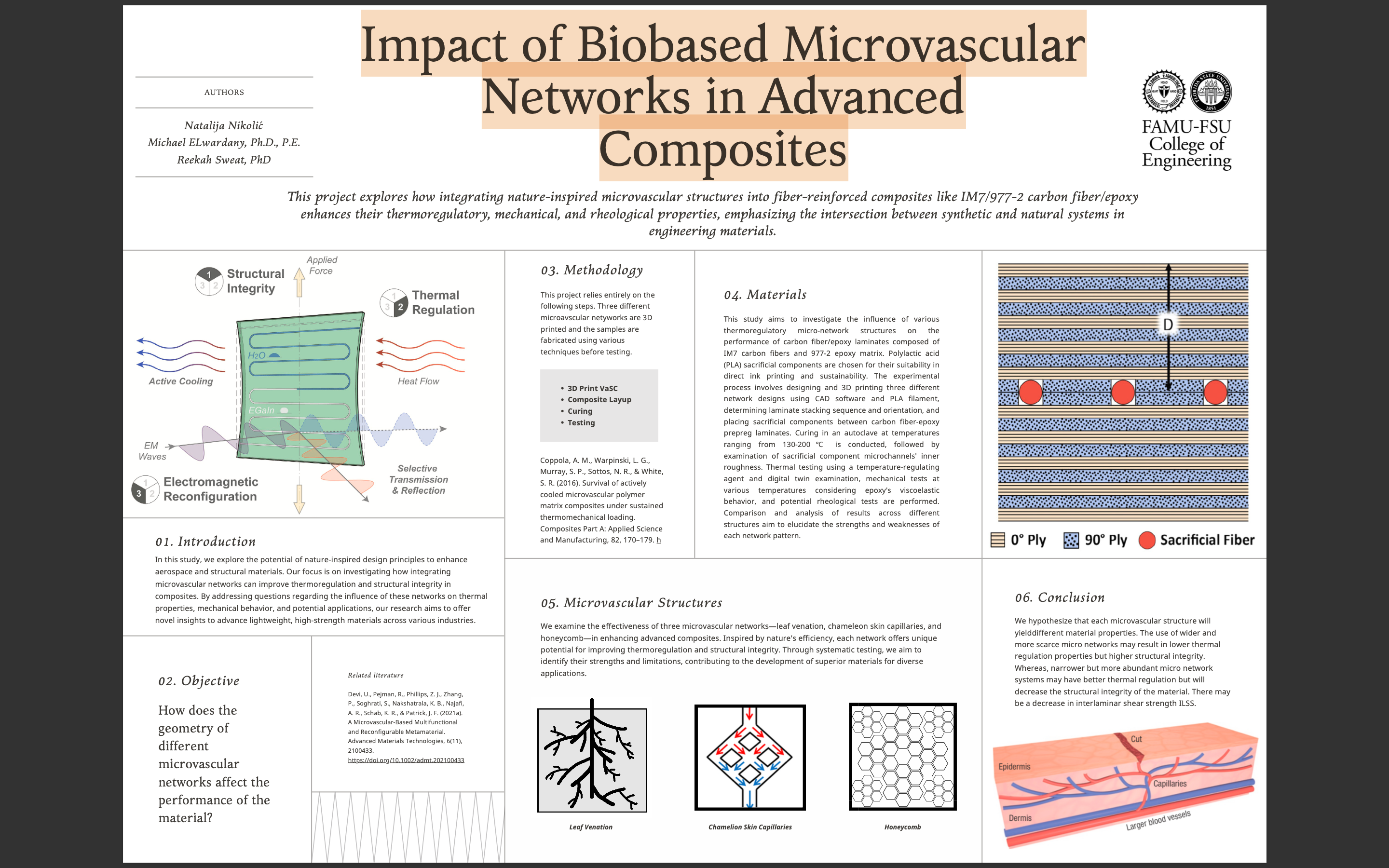Research Symposium
24th annual Undergraduate Research Symposium, April 3, 2024
Natalija Nikolić Natalija Nikolic Poster Session 2: 10:45 am - 11:45 am/218
BIO
Natalija Nikolić is a senior Civil Engineering major, with minors in Chinese, Astrophysics, and Mathematics. Her research experiences include working at the MagLab on a project involving cuprate superconductivity and at the RIDER center on a project conducting wind engineering tests on 3D printed model buildings. Her current project, Impact of Biobased Microvascular Networks in Advanced Composites, is serving as her Honors Thesis project, which she will defend in the Fall. Post-graduation, Natalija will work as a structural engineering intern with Stantec for a semester and eventually begin graduate school with a focus on materials science and engineering.
Impact of Biobased Microvascular Networks in Advanced Composites
Authors: Natalija Nikolić, Michael ElwardanyStudent Major: Civil Engineering
Mentor: Michael Elwardany
Mentor's Department: Civil Engineering Mentor's College: College of Engineering Co-Presenters:
Abstract
This study investigates the integration of microvascular networks into advanced composite materials, aiming to enhance their thermal regulation and structural integrity. Inspired by nature's intricate designs, we fabricate three distinct microvascular network patterns - honeycomb, leaf venation, and chameleon skin capillaries - using 3D printing technology. These networks are then incorporated into composite materials during the layup process, ensuring uniform distribution and connectivity. After curing, mechanical and thermal tests are conducted to evaluate the performance of the composite specimens. Mechanical tests, including tensile, flexural, and impact tests, assess the material's strength and toughness, while thermal tests measure thermal conductivity and temperature regulation capabilities. Statistical analysis of the experimental data provides insights into the effectiveness of the microvascular networks in enhancing the properties of the composite materials. Our findings suggest that the integration of microvascular networks holds promise for developing high-performance composite materials with superior thermal regulation and structural properties. These materials have potential applications across various industries, including aerospace, automotive, and structural engineering. Through our research, we contribute to the advancement of materials science and engineering, paving the way for the development of lightweight, high-strength materials with enhanced performance characteristics.
Keywords: Composites, Microvascular Networks, Thermoregulation


